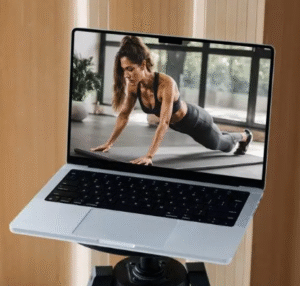Years ago, I was the epitome of inflexibility. I was a fitness enthusiast, yet touching my toes was an impossible task. I couldn’t stretch my muscles enough to do a split or even a proper yoga pose. My personal trainer pointed out my lack of flexibility and suggested incorporating flexibility exercises into my routine. I rolled my eyes, thinking how irrelevant it was. But when I started experiencing muscle stiffness and joint pain, I realized the importance of flexibility. I decided to give it a shot, and today, I can proudly say that I am more flexible than ever. Not only did I gain the ability to perform various yoga poses gracefully, but my overall fitness level has significantly improved.
Why is Flexibility Important?
Flexibility is often overlooked, but it’s a crucial part of fitness. It helps to maintain a good range of motion in the joints, which prevents muscles from becoming tight and rigid. Without flexibility, everyday activities like bending, reaching, or twisting can become difficult and painful.
Benefits of Flexibility
Flexibility has numerous benefits, from reducing the risk of injuries to improving posture and balance. It also enhances muscle coordination and reduces muscle pain and stiffness. Most importantly, flexibility exercises can be a great source of relaxation and stress relief. They encourage a sense of well-being and serve as a perfect antidote to our hectic lifestyles.
Best Exercises to Improve Flexibility: An Overview
There are numerous exercises that can improve flexibility. From yoga to Pilates, these exercises target various muscle groups, helping to lengthen and stretch them. The key is to perform them regularly and maintain proper form.
Yoga Poses
Yoga is a fantastic way to improve flexibility. It involves a series of poses that stretch and strengthen different muscle groups. Some effective yoga poses for flexibility include the Downward Dog, Cobra Pose, and Pigeon Pose. An online training program can guide you through these poses, ensuring you perform them correctly and effectively.
Pilates Exercises
Pilates is another excellent method to increase flexibility. It focuses on controlled movements and precise alignment, which are beneficial for stretching muscles and improving overall flexibility. Some effective Pilates exercises for flexibility include the Roll Up, Saw, and Spine Stretch. Again, working with a personal trainer or an online training program can ensure you’re doing these exercises correctly.
#### Tai Chi Moves
Tai Chi is an ancient Chinese martial art that is now popular worldwide as a health-promoting exercise. It is renowned for its ability to enhance flexibility. The slow, gentle, flowing movements of Tai Chi not only relaxes the body but also stretches the muscles, tendons, and ligaments. This leads to increased joint flexibility and range of motion. Specific Tai Chi moves such as “Part the Wild Horse’s Mane” and “Grasp the Bird’s Tail” are excellent for improving flexibility in the lower body. Additionally, the “Wave Hands like Clouds” movement is beneficial for shoulder flexibility. Remember, as with any exercise, it’s essential to listen to your body and not push beyond your comfort zone.
#### Dynamic Stretching
Dynamic stretching is an excellent way to increase flexibility and mobility. Unlike static stretching, dynamic stretching involves moving parts of your body through a full range of motion. Some common examples include leg swings, arm circles, and lunges with a twist. These exercises prepare your body for physical activity, increasing blood flow and muscle temperature. Furthermore, dynamic stretching improves your muscles’ ability to lengthen and contract, enhancing overall flexibility. It’s a great way to start any workout, or you can do a short dynamic stretching routine in the morning to wake up your muscles for the day ahead.
#### Tips to Enhance Flexibility Training
To make the most out of your flexibility exercises, consistency is key. Regular practice will yield better results over time. Start slow and gradually increase the intensity and duration of your workouts. Incorporate a variety of exercises like Yoga, Tai Chi, and dynamic stretching to target different muscle groups. Always warm up before stretching to avoid injury and cool down afterward to aid recovery. Hydrate well and maintain a balanced diet to support your training. Lastly, remember to breathe deeply and relax during your exercises; this helps to relieve tension and enhances flexibility.
#### Caveats on Flexibility Training
While flexibility exercises are generally safe, it’s crucial to avoid common mistakes to prevent injury. Overstretching is a common error; pushing your body beyond its limit can cause muscle strain or even tear. Always perform exercises on both sides to maintain balance and prevent muscle imbalances. Avoid bouncing while stretching as this can lead to muscle tears. If you have any medical conditions or injuries, consult a healthcare professional before starting any new exercise program.
#### Consistency is Key
Flexibility training is not a one-time thing; it requires dedication and consistency. You won’t become flexible overnight. It might take weeks or even months to see substantial improvements. But don’t get disheartened. Keep practicing regularly, be patient, and you will surely see progress. Remember, the journey to flexibility is just as important as the destination. Each small improvement is a victory worth celebrating. Just keep going, and you’ll reap the benefits of flexibility in no time.
Remember to check out our other fitness-related articles for more tips and advice. Happy stretching!
About the Author: Ana Plenter

Ana Plenter is a an Award Winning Personal Trainer, Fitness Competitor & Competition Coach and the Founder of Build My Body Beautiful & Body Beautiful Fitness








